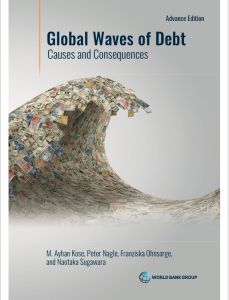Join getAbstract to access the summary!

Join getAbstract to access the summary!
M. Ayhan Kose, Peter Nagle, Franziska Ohnsorge and Naotaka Sugawara
Global Waves of Debt
Causes and Consequences
World Bank, 2019
What's inside?
Rising global debt could end in disaster – or not.
Recommendation
Will rising global debt end in disaster? Perhaps not. In this rigorous study, World Bank Group economists analyze four historical episodes of debt accumulation in emerging markets and developing economies: Three ended in widespread financial crises and one, which began in 2010, is ongoing. Their report is rich in graphs and statistics, and intrepid readers can delve into ample appendices that detail the research data and models. Executives, economists and policy experts concerned about the current expansion of credit will value the keen insights in this authoritative paper.
Summary
About the Authors
M. Ayhan Kose, Peter Nagle, Franziska Ohnsorge and Naotaka Sugawara are World Bank Group economists and researchers.




















Comment on this summary